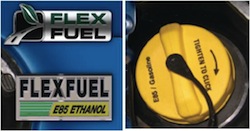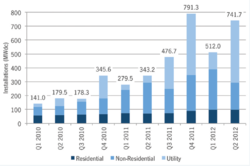The American Solar Energy Society (ASES) has launched a new campaign, Solar Freedom Now (SFN). The initiative aims to attack a major barrier to solar energy deployment – cost and the paperwork and red tape that doubles installation costs. The goal of ASES is to make it fast and easy to install rooftop solar panels. The first step of the Solar Freedom Now campaign is to begin working at the grassroots level to educate consumers about the issue and segway that into wide spread support.
 Studies out of the National Renewable Energy Laboratory and the University of California, Berkeley, both conclude that in the U.S., higher prices are almost exclusively related to the paperwork it takes to “officially” install a standard rooftop system.
Studies out of the National Renewable Energy Laboratory and the University of California, Berkeley, both conclude that in the U.S., higher prices are almost exclusively related to the paperwork it takes to “officially” install a standard rooftop system.
“Solar systems cost twice as much in the U.S. compared to Germany,” said solar industry leader Barry Cinnamon. This red tape is holding back the industry from creating even more jobs, driving innovation, and building true energy security for our nation.”
ASES says a national approach to paperwork and red tape is required. Susan Greene, ASES president, said approximately 18,000 cities and 3,000 utilities and all 50 states have set different rules and procedures for installation. This needs to be coordinated and legislated into one nationwide approach. Solar Freedom Now, said Greene, is a coordinated effort across the county to do just this.
“It takes only days to install a system in Germany compared to months in the U.S,” said former Sharp Solar executive Ron Kenedi. “I can tell you from personal experience — as well as 30 years in the solar industry — that we can install safe, code-compliant systems here in the U.S. just as fast as they do in Germany. All the extra time, paperwork and inspections simply add to the installed cost of our systems.”


 The
The 










